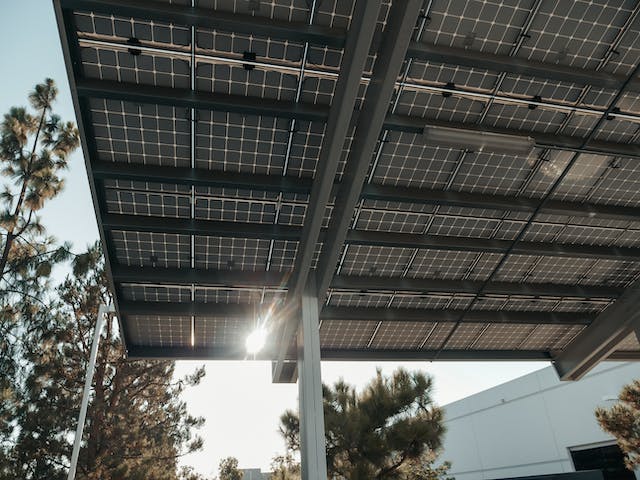1. Introduction
An increasing number of homes are looking for economical ways to control their energy expenditures as the cost of power keeps rising. In order to lower their electricity costs, homeowners are finding that solar power is a cost-effective and environmentally friendly option. Solar panels provide a renewable energy source by utilizing the sun's energy, which can greatly reduce reliance on conventional utility suppliers and result in long-term cost savings for customers. We will look at how using solar power can help you save as much money as possible on your electricity bills in this blog post.
2. Understanding Solar Power
Solar panels are used in solar power systems to convert sunlight into electricity. Photovoltaic cells, which are the building blocks of these panels, collect sunlight and produce direct current (DC) electricity. The majority of households and businesses utilize alternating current (AC) electricity, which is created by an inverter from DC electricity.
A solar power system requires a number of parts to be assembled. In addition to the inverters and solar panels, other parts of the system include wiring between the various parts, mounting structures for the panels to be supported on the ground or roof, and a monitoring system for tracking energy production. Batteries may be included, depending on how the system is configured, to store extra energy produced on sunny days for use at night or during overcast spells.
For homeowners hoping to get the most out of their solar power system and optimize their long-term electricity bill savings, it is imperative that they comprehend these components. Households can lessen their reliance on conventional grid-supplied electricity and possibly even sell excess energy back to utility providers through net metering schemes by effectively utilizing the sun's renewable energy.
3. Calculating Your Energy Needs
A critical first step in optimizing solar power's ability to reduce electricity bills is calculating your energy needs. Start by looking through previous power bills or utilizing an online energy calculator to estimate how much energy you currently use. This will provide you with a starting point for estimating your monthly electricity consumption.
Next, evaluate your energy needs and the size of a solar system that could satisfy them in order to determine the possible savings with solar power. Examine your usual daily electricity consumption and calculate the number of solar panels needed to balance that amount.
Think about things like the roof's orientation, angle, shading from surrounding trees or buildings, and structural soundness to handle the weight of solar panels when evaluating your roof area for solar panel installation. Make sure nothing is preventing you from receiving as much sunshine as possible throughout the day.
You may have a better understanding of the possible savings and advantages of switching to solar power for your home by precisely estimating your energy demands and assessing the space on your roof that can be used for solar panel placement.
4. Choosing the Right Solar System
To optimize electricity bill savings, a number of criteria should be taken into account while selecting the best solar system for your house. Start by calculating your energy requirements using past usage data and anticipated future demand. Your home's optimal system size can be determined with the aid of a professional examination.
Next, think about the kind of solar system: grid-tied or off-grid. Off-grid systems need battery storage to store extra energy as they run separately from the utility grid. Because they require batteries, they are more expensive even if they offer energy security.
Grid-tied systems, on the other hand, do not need batteries because they are linked to the electric grid. With net metering, you can feed back excess energy produced during the day into the grid and receive credits or even money from your utility company.
Your location, financial situation, energy requirements, and sustainability objectives all play a role in the decision between grid-tied and off-grid systems. To get the most electricity bill savings, it's critical to speak with solar specialists to establish which system best meets your needs.
5. Maximizing Savings with Solar Power
The key to maximizing savings from solar power is implementing energy-saving techniques. Setting timers for lights and appliances can help make sure that electricity is used as efficiently as possible by coordinating use with the hours of maximum sunlight, when your solar panels produce the most energy. By enabling you to remotely regulate and monitor your energy usage, smart appliances can further improve energy efficiency and help you get the most out of your solar power system.
Utilizing existing incentives, rebates, and financing alternatives can greatly boost the cost-effectiveness of installing solar panels in addition to optimizing energy usage. To promote the use of renewable energy sources, such as solar electricity, several countries provide financial incentives in the form of tax credits or refunds. For homes that want to go solar, these incentives can hasten the return on investment and help defray the initial installation expenses.
Solar power can be more widely available and reasonably priced by looking at different financing options such as solar loans or leasing schemes. With low interest rates and flexible payback options, solar loans enable homeowners to finance their solar installations. This makes it easier to enjoy the long-term financial benefits of switching to solar power without having to make a sizable upfront cost. For homeowners who would rather not buy solar panels outright but still want to take advantage of the financial benefits of producing their own renewable energy, leasing schemes offer an alternative.
Homes can optimize their electricity bill savings with solar power and contribute to a more sustainable future by combining energy optimization tactics with available incentives and financing alternatives.



